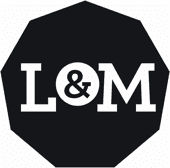Some things that happen in life hit you like a tidal wave. My father’s unexpected death was like that for me. The year was 1973. I was 20 years old and a recent university graduate when my father died. That is when I became the new leader of our small family business of five employees.

A second wave of surprise and disbelief hit me when I discovered our business was carrying a huge (I mean a really huge) amount of debt with very little income!
As I began to lead our small company, I realized that there’s a big difference between leadership and management.
With the help of a lot of very good people over many years, I was able to grow our small, debt-laden company into a highly successful organization with over 150 employees.
What is your bent?
In my previous blog post, I asked you what was your life bent or bias. And in our work, I have found that there are two main leanings: Leading and Managing.
If you did not read my previous blog post, could I suggest you go there now <click here> and answer the seven questions to help you find your life bent? Just answering the questions themselves will take you about 60 seconds.
What have you discovered about your bent or bias? Do you lean more toward managing or leading?
Looking back to when I was a young boy, my leaning or bent has been toward leading.
When I observe my life experiences, I’ve had to learn to get better and better at the skills of managing to compliment my bias toward leading.
I’ve also observed that over the years I have surrounded myself with very good managers who were much better than me in certain management skills. They knew how to follow-through, implement, execute, and get results.
Their skills and abilities served to complement and complete my natural strengths.
Iron sharpens iron, and one man sharpens another. Proverbs 27:17 NIV
However as our business grew, I had to tackle a new challenge of leading and developing a team of leaders.
I’m so proud of how many of those leaders kept growing, and where they are now. WOW!
The historical responses to the seven questions have revealed that most people’s leaning, or bent is toward managing. The key to becoming the most effective leader is for managers to add to their bent the learned skills of leading.
So what are the differences between leading and managing?
Leading and Managing Difference
Leading vs. Managing
[table id=3 /]
Manager’s vs. Leader’s Approach
Every manager/leader can understand the two approaches to getting things done by observing six examples.
Managers and leaders have different approaches
· Managers are driven toward immediate results (What they say and do.)
· Leaders are oriented toward relationships and long-term effectiveness (How they say and do it.)
Examples
Manager – Makes decisions based on their own high levels of knowledge and experience.
Leader – Seeks input from others who may have additional or different views and insights.
Manager – Oversees engineers to design a product which works well…but may be difficult to build, service, or repair – and does not reflect changing interests of customers and prospects
Leader – Guides engineers to seek pre-design advice from teams of customers, prospects, and employees from other departments.
Manager – Interviews prospective employee using questions about what the prospect has done without exploring how they approached their work and why they made certain decisions.
Leader – Ask questions about what the prospect has done…but more extensively uses follow-up questions about how and why in order to gain insights to the applicant’s core values and style.
Manager – Orders someone to close the door.
Leader – Asks “Could you close the door?” or “How about closing the door?”
Manager – Parent or coach shouts criticism at an athlete in public.
Leader – Parent or coach publicly supports and encourages athletes by constructively looking forward to opportunity, not backward to blame.
Manager – Provides their employees with information on a “need to know” basis.
Leader – Openly and respectfully provides employees with information of potential interest regarding all aspects of the organization in order to enhance their overall awareness and sense of belonging.
As you have gone through these examples, do you see the difference between the drive for results vs. the desire to maintain and enhance relationships?
The key to becoming the most effective leader is to employ BOTH leading AND managing (enhance relationships AND drive for results).
What is your bent? Do you have a bent toward managing or leading? Are you ready to commit to becoming a more effective leader? Please share your feedback and leave a comment by clicking <here>?
Updated: 6/30/2016

